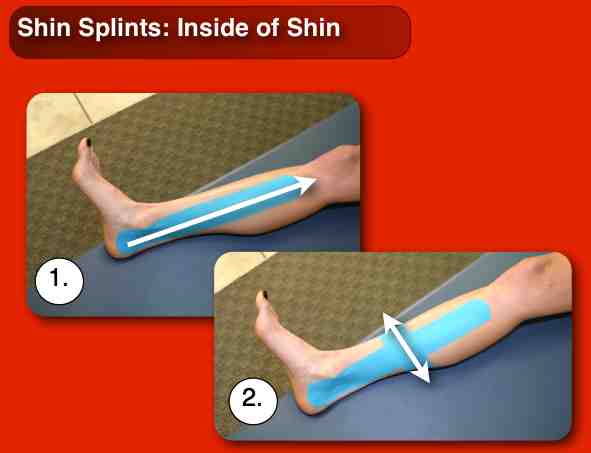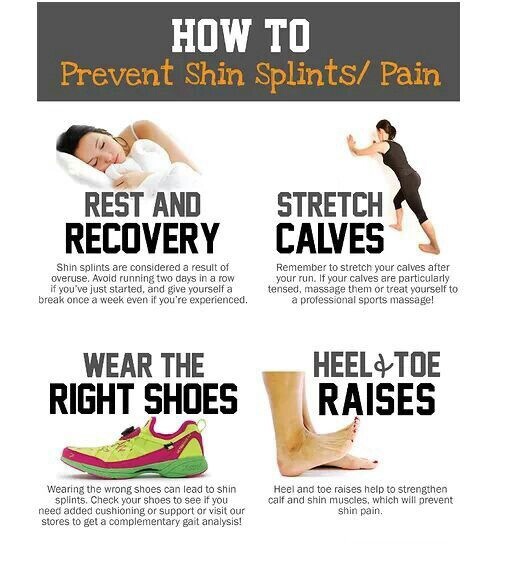Aug 2015: Kinesiology Taping for Shin Splints
I wish kinesiology taping had been around when I was playing soccer in my teens. The pain was very debilitating at times and the coaching lore of the day was to use heat, do shin strengthening exercises and keep on running – completely the opposite of today's medical best practises!
Shin Splints (bad, but common term) or what many prefer to call Tibial Stress Syndrome (TSS), is a common condition in people who play weight bearing sports or those who walk a lot at their job.
The muscles that attach to the shin bone (tibia) have long shallow attachment. Under excessive or prolonged stress the shin muscles develop little tears where they attach to the bone. In severe cases, inflammation collects between the muscle and the bone covering, leaving a visible line (that shouldn't be there!) on x-rays. That's why TSS pain seems so broad rather than specific like many other injuries.
This condition is not limited to mild discomfort. TSS can very quickly morph into tibial stress fractures and stress fractures mean no walking for many weeks – something that almost nobody would find agreeable to their lifestyle.
Seek medical advice if the pain is persistent or severe. Excruciating pain in the area of the shin can be a more serious issue such as a compartment syndrome. Don't mess around with pain that feels beyond a strain and/or doesn't go away with rest.
Causes
1. Placing too much demand on the shin muscles from unfamiliar volume or type of activity, most often a running sport.
2. Poor foot biomechanics causing the shin muscles to become overworked.
Treatment
1. Start with a proper gait and foot assessment to determine if there's a biomechanical problem of your feet. No amount of rest or exercising or kinesiology taping will be able to overcome a significant biomechanical problem of the feet.
Very often people who suffer from TSS have pes planus (literally "foot flat" in latin) when they stand and walk. For all of the details on foot biomechanics check out Biomechanical Control of the Flat Foot.
2. Stretch the calf muscles! The calf muscles are tight on most people so a good stretching programme is almost always part of the solution.
3. Cut back on any activities where there is a lot of uphill or downhill running. It places excessive demand on the "braking" role of the shin muscles.
4. Cut back on any sports that are on hard surfaces and run on trails instead of asphalt/concrete for a while.
I see an inordinate number of soccer players in my clinic towards the end of the soccer season and one of the factors is that the fields become drier and harder as the summer progresses -from yielding grass in May to pitted concrete by August.
5. Ice after activity. 10 minutes on, 10 minutes off, then 10 more on.
6. Kinesiology taping in the early and/or preventive stages…which leads us to…
If you haven't already, please refer to the Kinesiology Taping Basics section for proper application techniques.
Kinesiology Taping for the Tibialis Posterior Muscle (pain on the outside of the shin)
- Begin by preloading the tissue by pointing the toe and turning your foot towards the other foot. Apply a strip from just above the outside ankle bone to the outside of your knee with little to no stretch.
- While maintaining stretched position, apply decompression strip right across the area of pain.
Kinesiology Taping for the Tibialis Anterior Muscle (pain on the inside of the shin)
- Point the toes up. Anchor stabilization tape below ankle on inside. Run tape up along shin crossing over area of pain. Apply no stretch.
- Apply a decompression strip with stretch over area of pain or ʻhot spotʼ. Stretch tape 50-75% in middle, with no stretch at ends.

25 July 2015: How to Prevent Shin Splints

|